Specifications and Main Features
o RAID Level support: Striping (RAID 0) and Mirroring (RAID 1)
o Supported Drives: Ultra ATA/133, Ultra ATA/100, Ultra ATA/66, Ultra ATA/33
o Data Transfer Rate: Maximum of up to 133MB/SEC for each drive
o Number of IDE channels: Supports Two IDE channels each of them operating simultaneously
o Data Management: Supports dual IDE channel operation working simultaneously, and supporting IDE bus master operation
o FastBuild Utility: Enabling playback ease for arrays to be configured from BIOS
o Maximum Drive Size: The 128-GB barrier limitation is surpassed with 48-bit LBA support
o Compatibility: Integrated with other IDE controllers and OS’s
o Error Notification: Displays status and error messages early in the boot-up process
o Automatic Rebuild: Mirroring will automatically background rebuild itself
Frequently Asked Questions
Q: Do the Promise PDC20271 uses striping and mirroring? What kind of RAID does it support?
A: The Promise PDC20271 respectively employs striping and mirroring. It encompasses a RAID 0 and a RAID 1 array.
Q: What is the maximum data transfer rate supported by this controller?
A: The maximum data transfer rate supported by the controller is one hundred and thirty-three megabytes per second (133MB/sec) per drive.
Q: Can I use drives larger than 128GB with this controller?
A: Indeed, the promise PDC20271 controller does support devices with capacities over 128 Gbytes owing to its supporting interface of 48-bit LBA.
Q: Does this controller require installing specific drivers?
A: The answer is in the affirmative, the SBFastTrak133 Lite driver has to be installed and then only the controller works with the operating system.
Q: Is it possible to recover data in the event of a mirrored array failure?
A: Yes, in case of one drive in a mirrored array older fails, you can change and the system will automatically start rebuilding the old data in the new drive from the remaining healthy mirrored drive.
Q: What will I do if the FastBuild utility does not detect my drives?
A: See whether the drives are connected and powered satisfactorily, and check whether the drives support Ultra DMA or Multi-word DMA.
Q: The status of the arrays, how can I check it?
A: In order to check the operational status of the arrays and the drive configurations, the FastCheck monitoring utility can be used.
User Manual
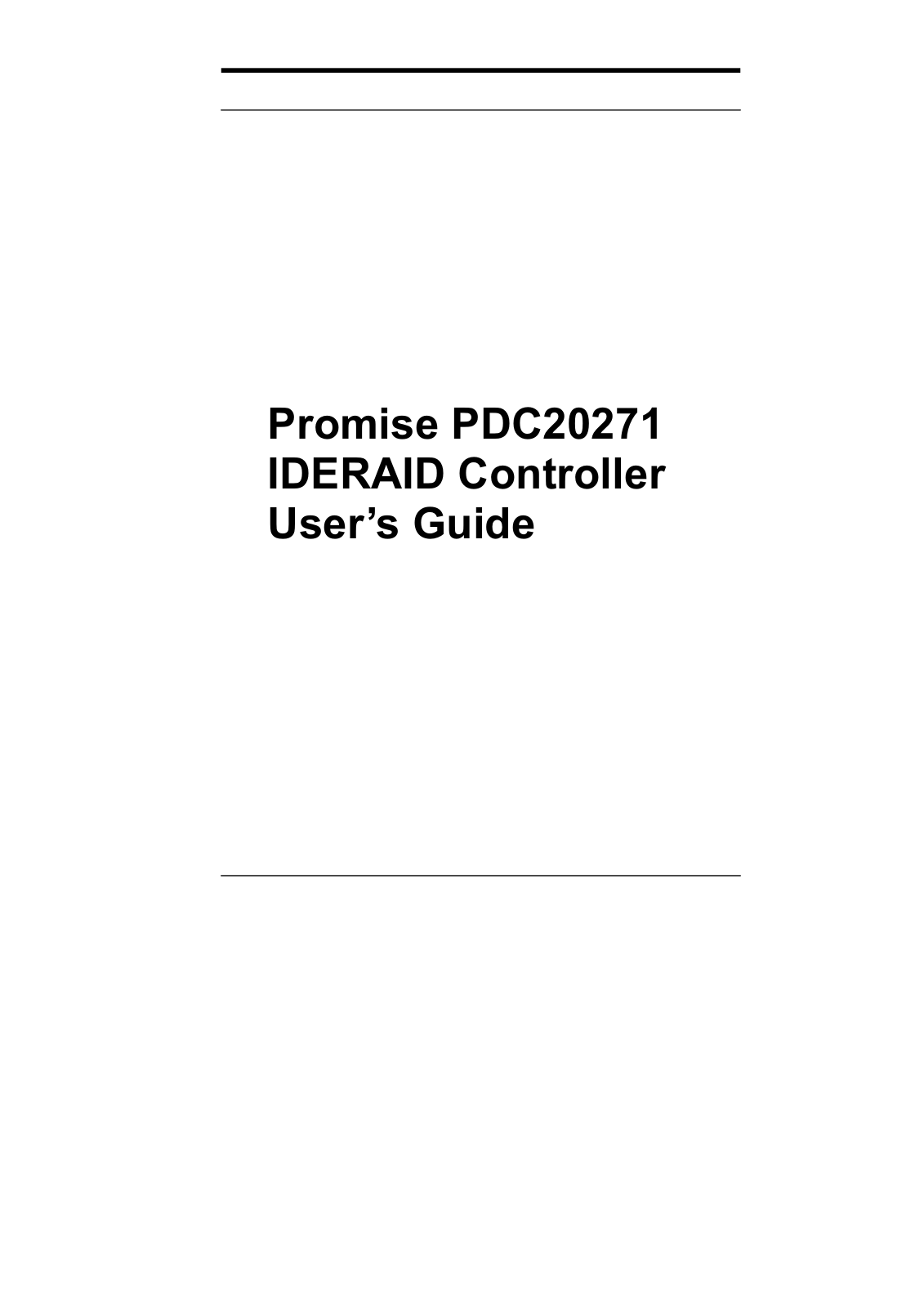
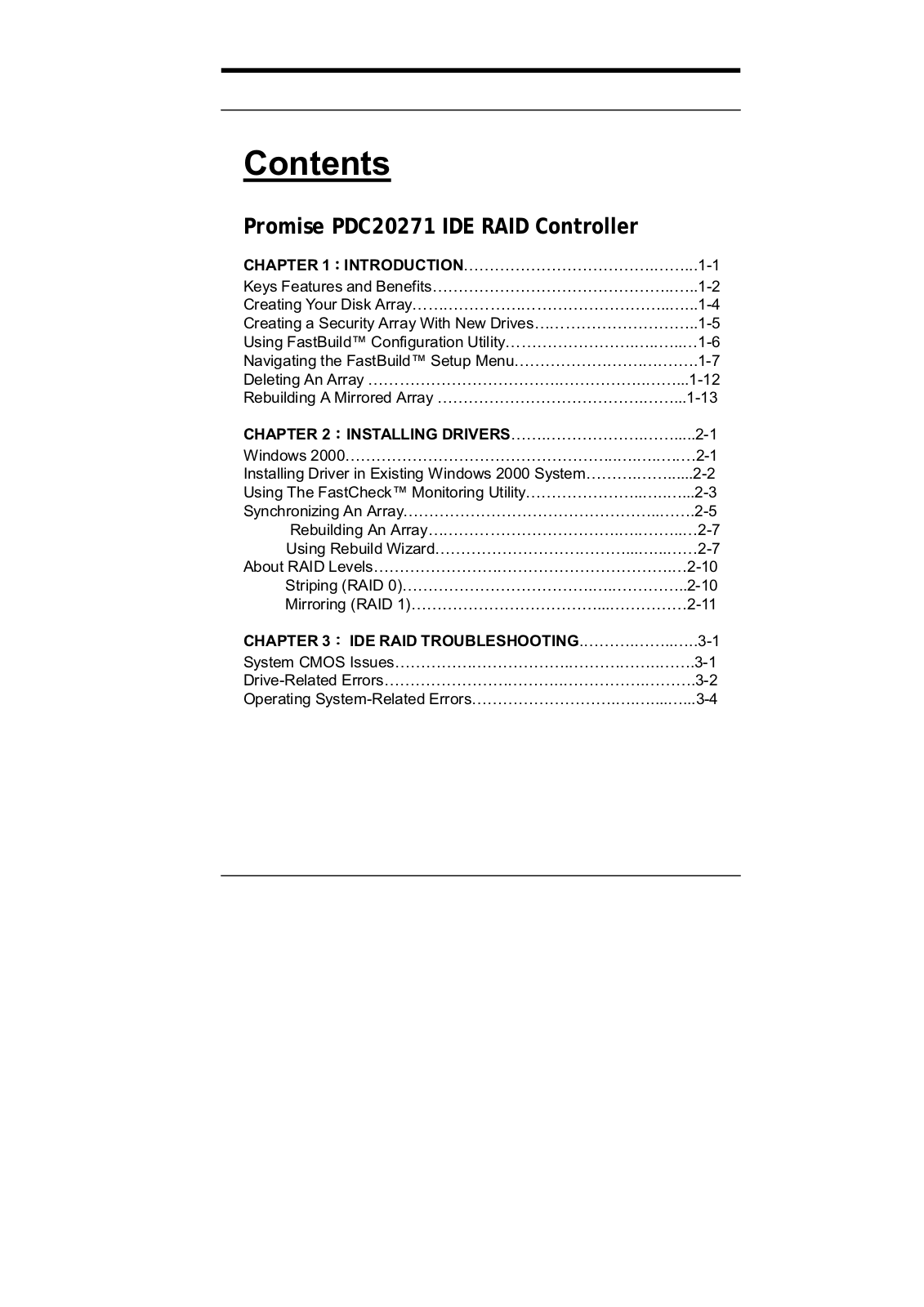
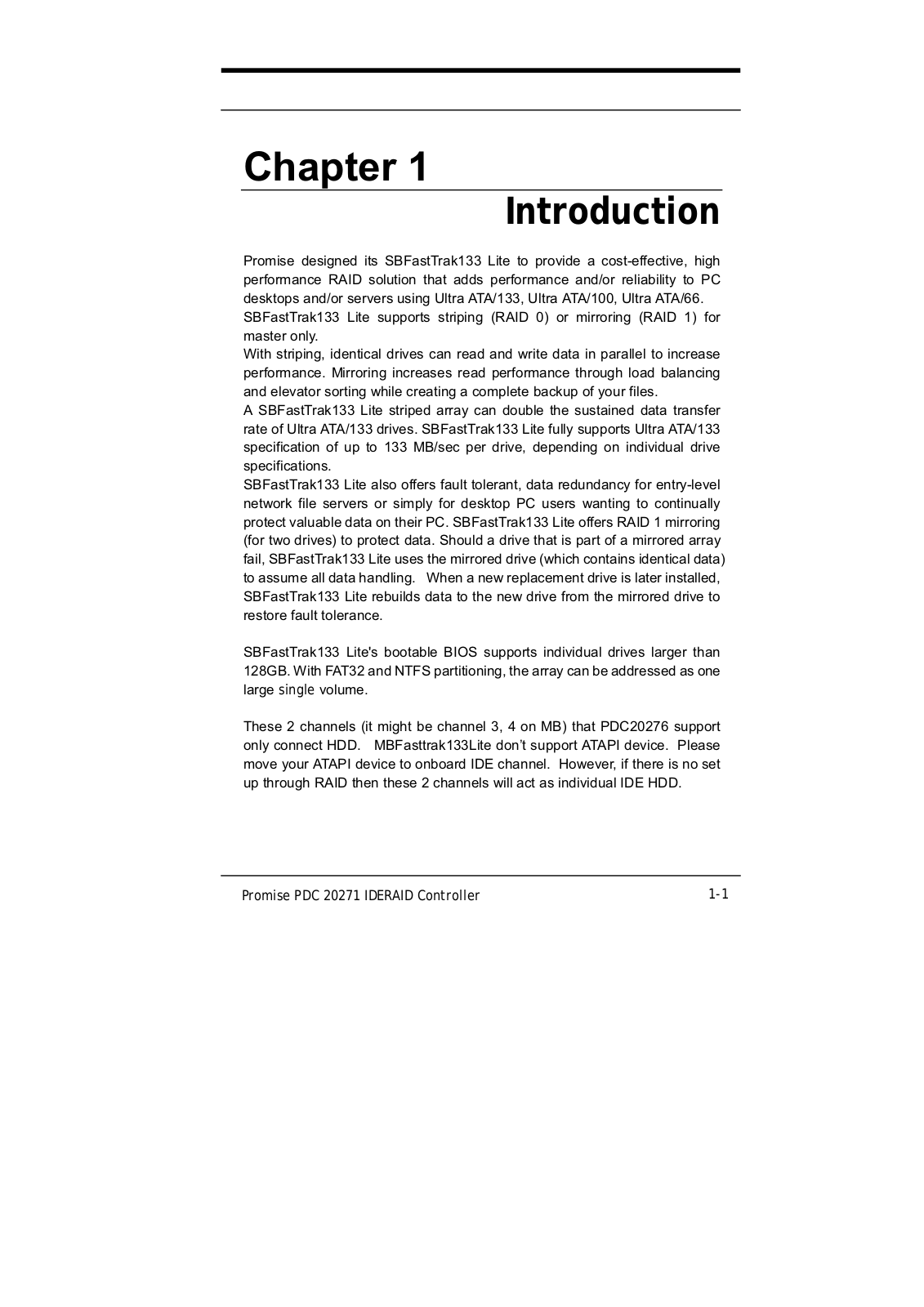
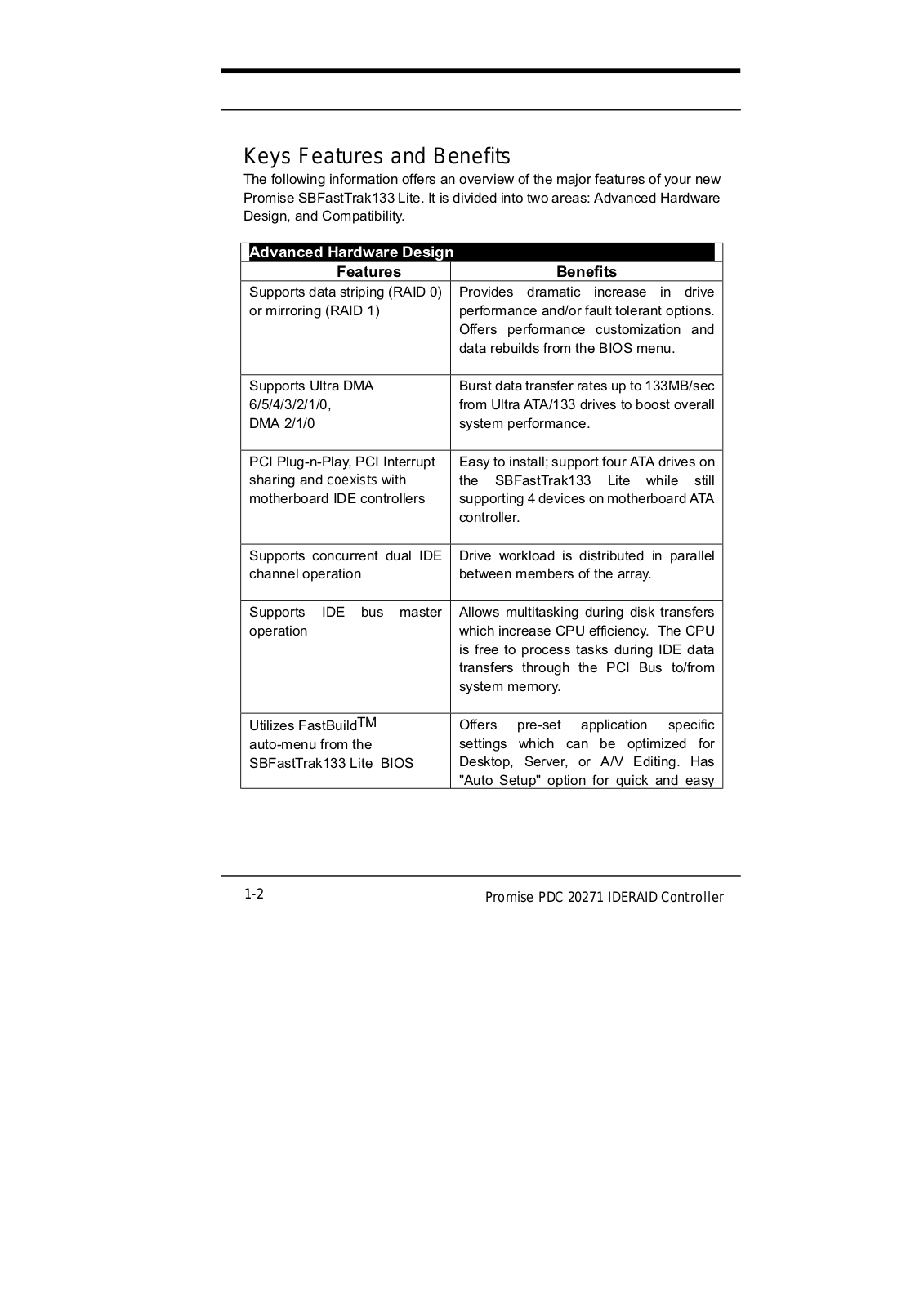
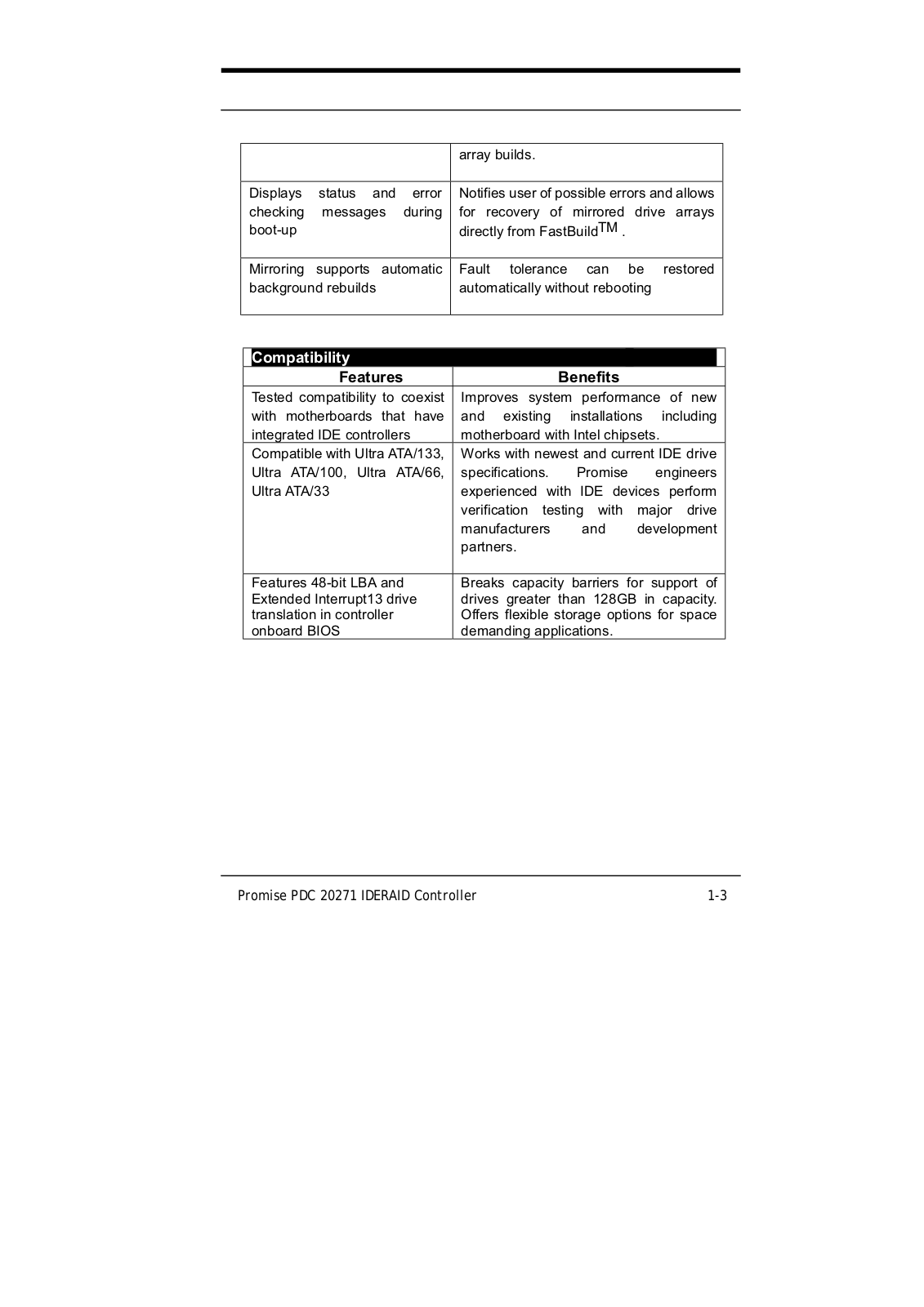
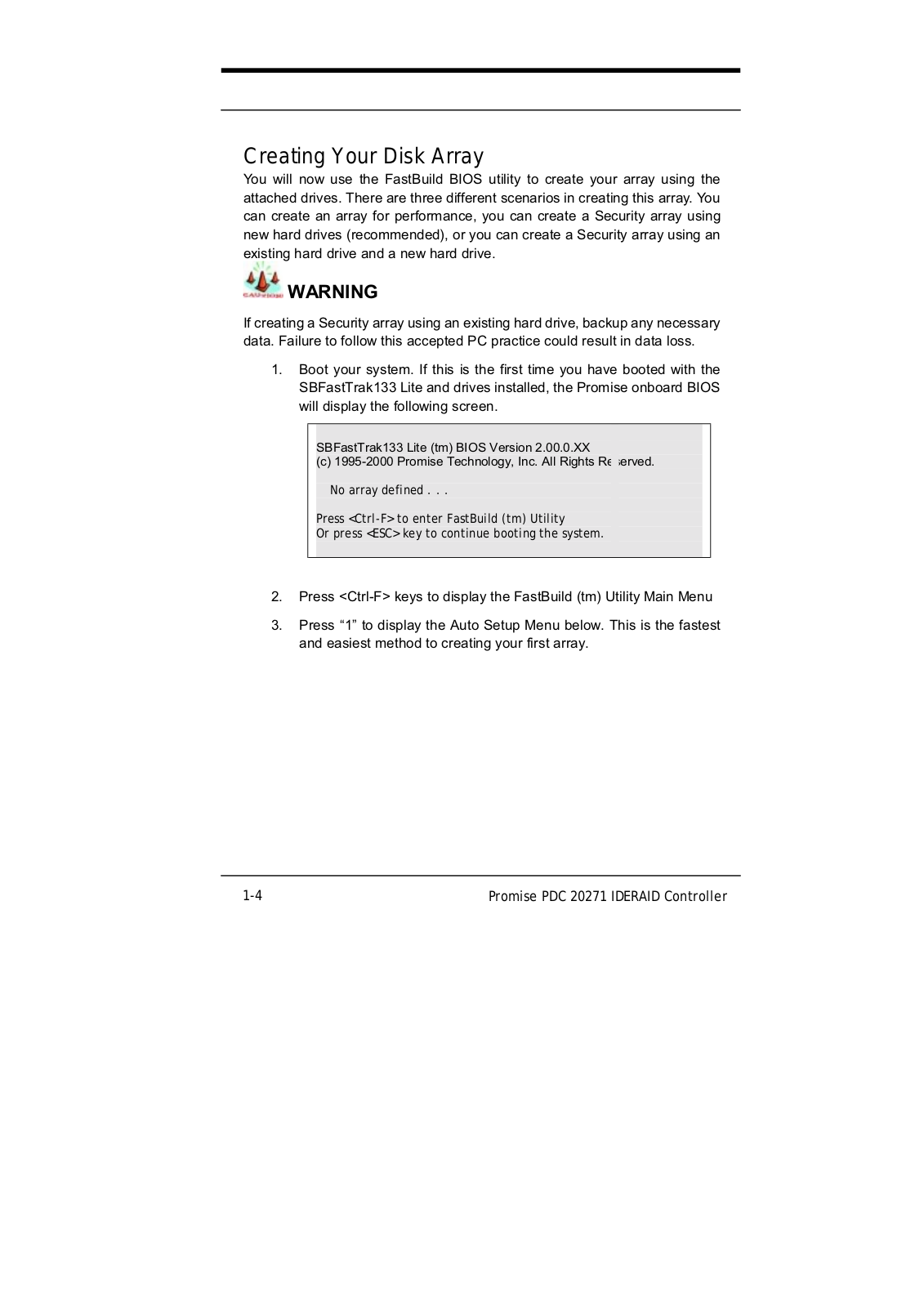
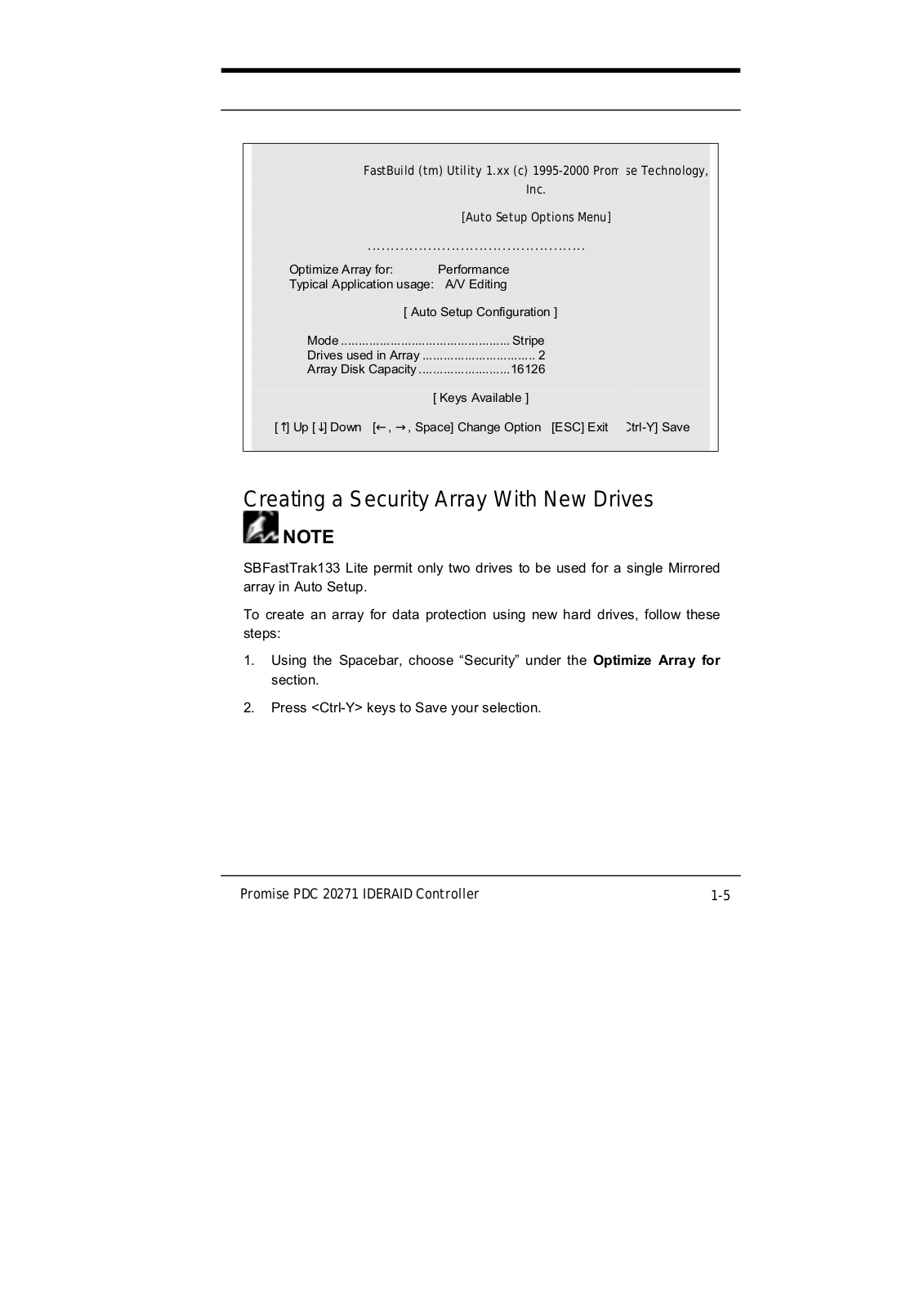
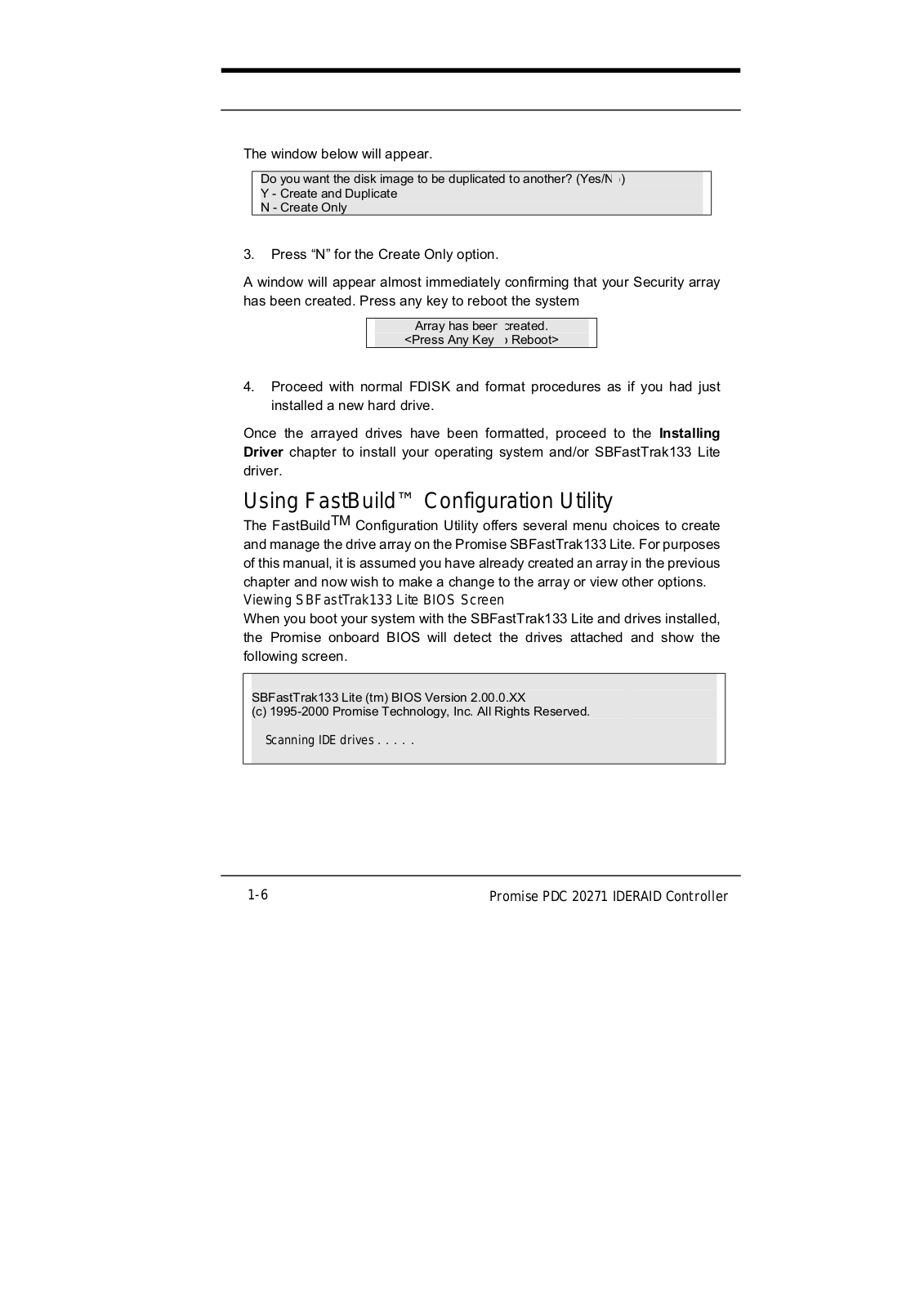
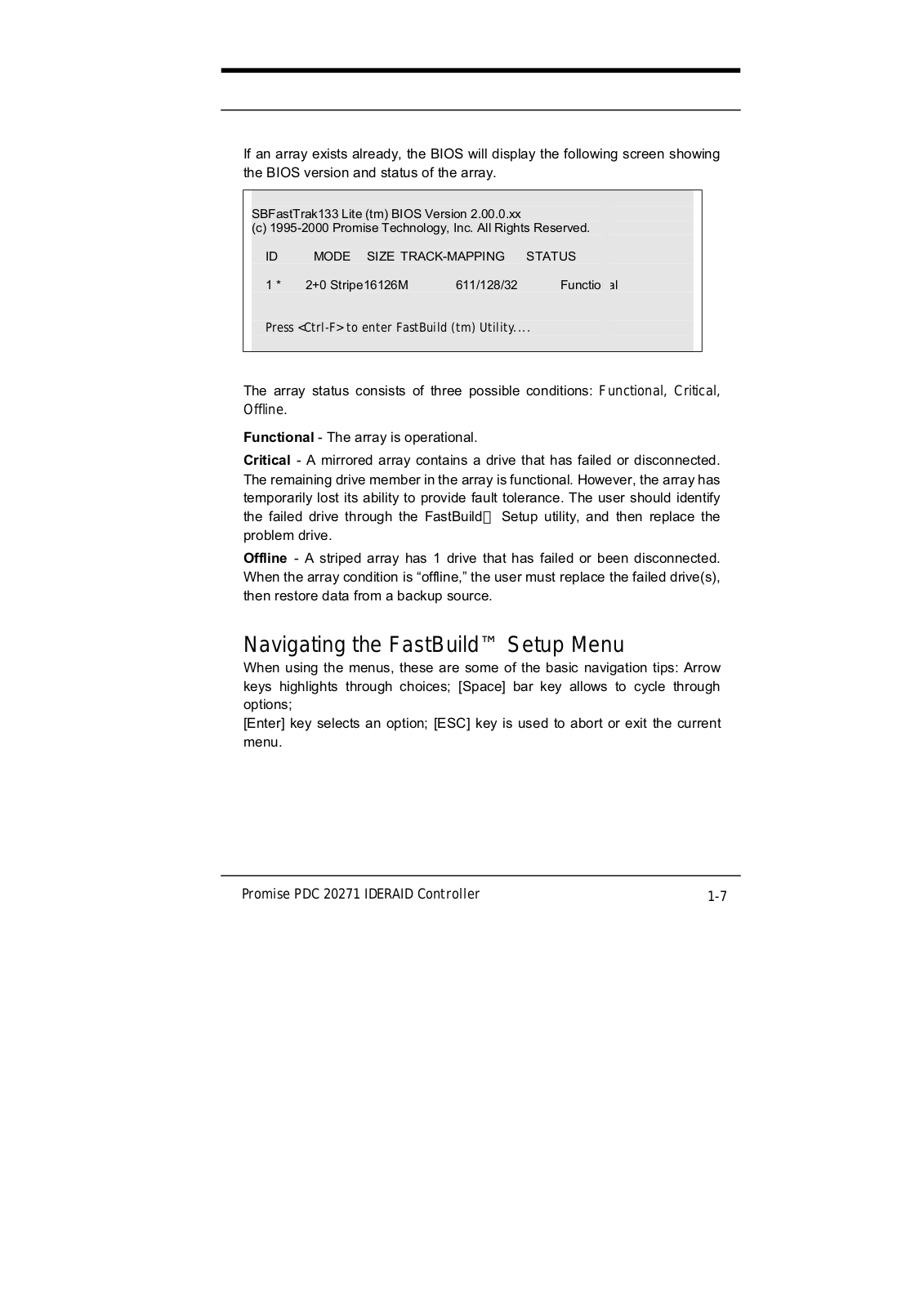
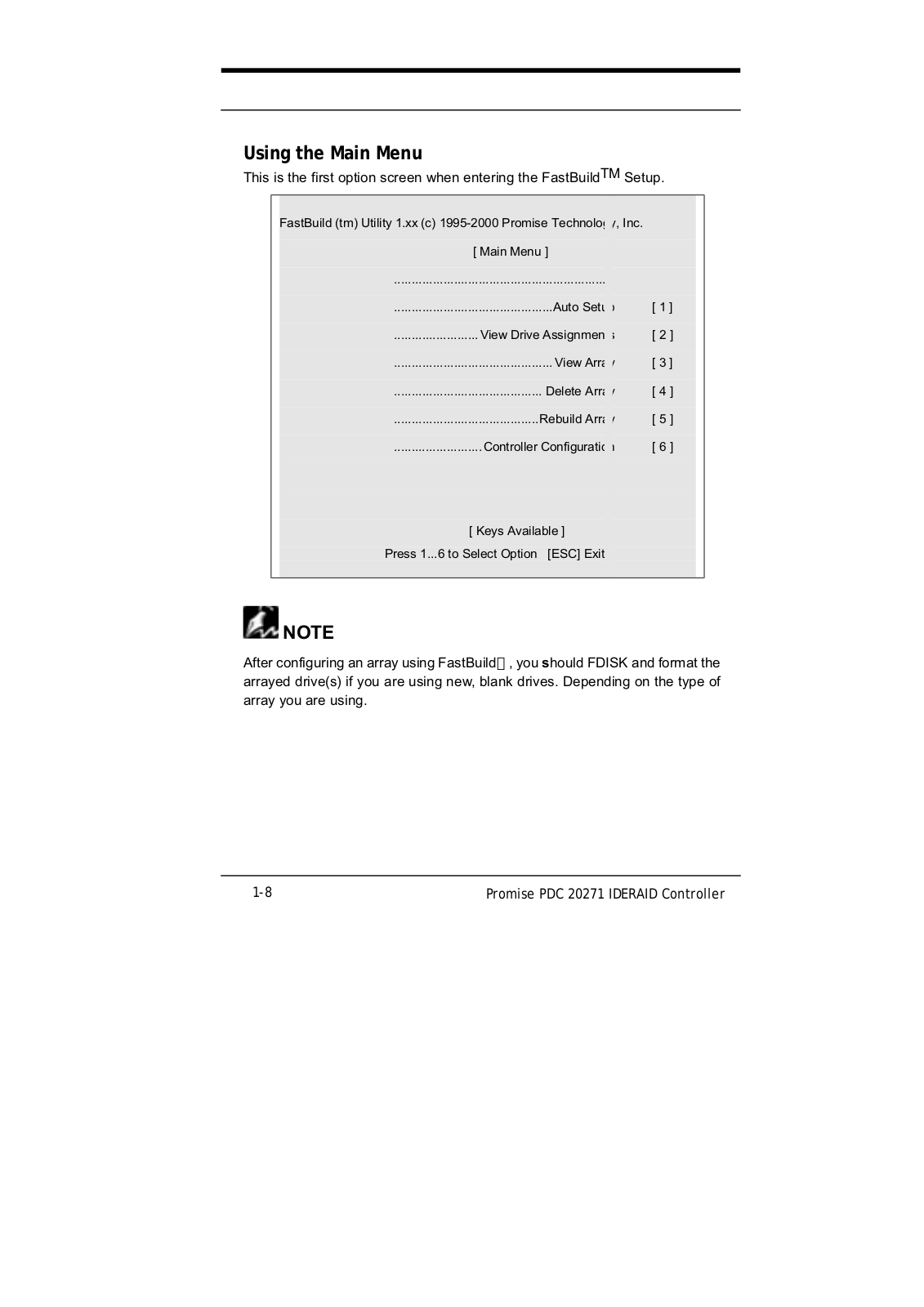
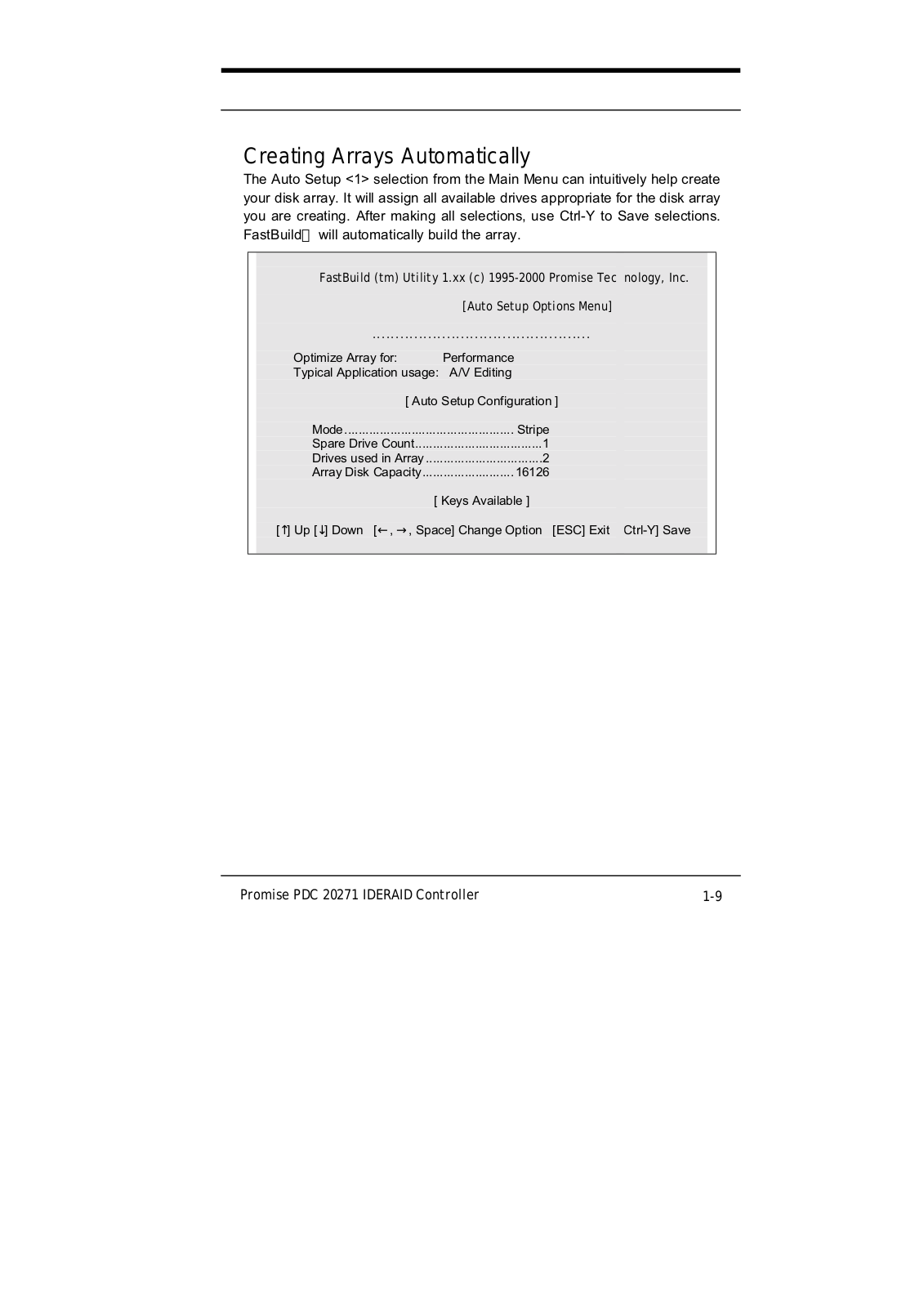























